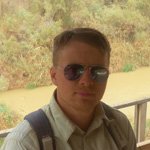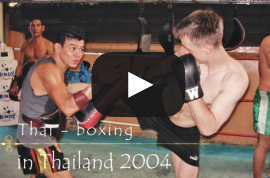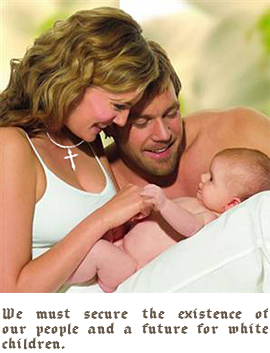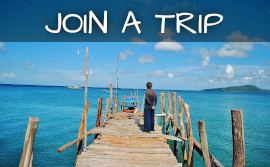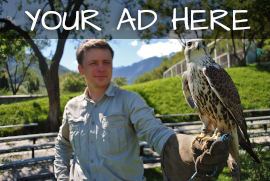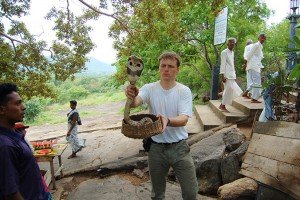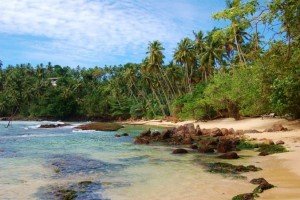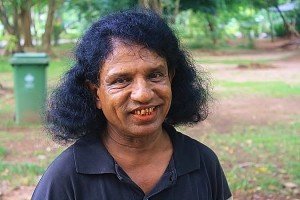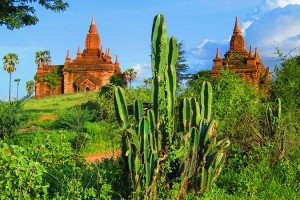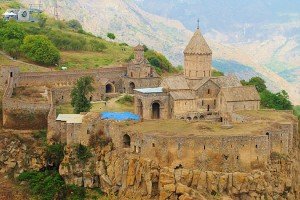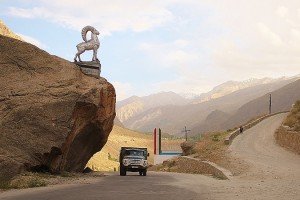Istanbul travel guide
All travel reports are translated electronically although minor improvements are sometimes made.
Istanbul travel guide
Istanbul is a very interesting city and I describe its tourist attractions in superlatives. The Blue Mosque, Topkapi Palace, Hagia Sophia and a Bosphorus cruise are just some of what this very interesting, attractive city has to offer. I really enjoyed the traditional Turkish bazaar, Turkish rugs and lanterns, and of course Turkish tea and some of the best kebabs in the world. I also enjoyed honest contact with people. In Istanbul I had many interesting conversations with the Turks, and as it turns out they are fed up with mass Arab immigration, arguing that ‘they are Turks, not Arabs.’ In the politically correct Europe, for such words they put the gag of ‘racism and xenophobia in defense of democracy’, while in Turkey, in my opinion, it is a natural reaction. Turks laugh at multi-culti of Europe, and they are right.
Day I – the main tourist attractions of Istanbul
I landed at the Sabiha Gokcen airport, on the Asian side of Istanbul. As soon as I bought a 3-month visa of multiple admissions for a magic sum of £ 20, I was finally in Turkey. From the airport I took a bus to Taksim Square for only 15 lira and then the subway to the Sultan Ahmet mosque, close to the Bosporus. I lived in a Harmony hostel for only 6 euros in a dorm room and although the conditions were poor, I had to like it for that price. The most important thing was that I found myself in a tourist center near the Blue Mosque and the former Hagia Sophia, close to the Bosphorus, close to the Grand Bazaar and Topkapi Palace.
However, I don’t want to suggest to future travelers that the attractiveness of Istanbu is based only on its monuments because the tourist attraction are also people themselves, Arabic sweets and the atmosphere of the city transformed into a bazaar. The first thing that I noticed during my journey from the airport was the forest of mosques. Besides, when I was still in Istanbul in 2013, when I returned from Iran, then the city was Turkish and in 2017 it seemed to me that Istanbul lost its Turkish identity and became more Arabic.

View of the Blue Mosque (Sultan Ahmet) in Istanbul.
Istanbul definitely has a lot to offer but I noticed that the city looks no longer Turkish, but Arabic. It is true that there are a lot of Arab tourists there, but according to statistics in Turkey there are about 3.2 million Arabs from Syria, including more than 0.5 million in Istanbul itself. When I was on Turkish sweets, a salesman from Syria was serving me, and even he said that “Arab immigration to Turkey is crazy.” I thought about how bad it is in Western Europe if even Arabs in Turkey have enough other Arabs.
Later, one Turk also complained about excessive immigration because, as he said: ‘we are Turks and not Arabs’. He also said that when the Arabs arrive somewhere, they colonize that country immediately. However in Europe, a comment of the same kind spoken by white people would be labeled as ‘Nazism and xenophobia’. Will we survive? I doubt it but in Europe, the future is not Islam or Christianity, but a one global herd of one culture and religion called tolerance.
On the first day, of course, I went to see the great Sultan Ahmet Blue Mosque, although I first stopped at Sultan Ahmet Square, with fountains and palm trees where the Sultan Ahmet mosque stands on one side and the Hagia Sofia on the other. These two objects and the square between them are the tourist center of Istanbul, where there are always many tourists, sellers of corn and ice cream, obtrusive sellers of little-needed things and pigeons who come here for dinner. Although the Sultan Ahmet square is always full I felt good there because the road and tram line are a bit further and there was no street noise.
Despite the tourist center, it is a place of reflection to which I have returned many times to sit on the bench next to the fountain and have a view of two huge objects. In my opinion, the silence is only disturbed by the loud prayers of Muslims from the Blue Mosque, who broadcast their programs 5 times a day. In my opinion, it is not about religion, but about domination, so that European tourists should hear Muslim prayers resembling war cries. War and domination are the basic pillars of Islam.

The panorama of Istanbul. Turkey.
Then I went to see the Blue Mosque (Sultan Ahmet), which is always a huge queue because it is one of the biggest tourist attractions of Istanbul. The Sultan Ahmet Mosque was built between 1609-1616 by Ahmed I and is called “blue” because inside it is decorated with 20,000 hand-painted blue tiles. Although the mosque is not the largest in the world, it is still huge. It has 5 main domes, 6 minarets and 8 smaller quarries. For this he has a square surrounded by a stone road with characteristic arches and his own garden. It is huge and mosques of this type are many in Istanbul though not so great. In order to realize the size of the Blue Mosque, I will give some information – it has 10,000 faithful, it is 73 m long and 65 m wide and the highest dome is 43 m tall.
In addition, the Blue Mosque also has 6 64-foot minarets with loudspeakers, which means that when Muslims pray inside, the whole city has no choice but to pray with them. Inside, the mosque is decorated with blue tiles, has huge crystal chandeliers, a library of koran and intricately made paintings on the walls, which in my opinion are very attractive and are the work of masters of patience. It is important, however, that all tourists visiting the Blue Mosque remember that the building was built not for religious reasons but because of the strength of the Ottoman Empire over the conquered nations, while the money for its construction was looted.
Today, all European prostitutes who come to the Blue Mosque in the company of their Muslim lovers admire blue tiles and tremble during aggressive Muslim prayers but in addition to art and the show of interesting architecture The Blue Mosque is a monument to occupation, war and exploitation that drips the blood of innocent people. Being there, I had a vision; I felt like in Germany, in England, in Sweden and the Netherlands in 2030.

The panorama of Istanbul seen from the Bosphorus at dusk.
On the other side of Sultan Ahmet Square there is Hagia Sophia, which is another monument of Muslim conquests. The construction of this facility began in 537 and until 1453 it was a Greek Catholic church and headquarters of the Patriarch of Constantinople. In the years 1204-1261, this object was also used as a Catholic church. However, on May 29, 1453, the capital of the eastern part of the Roman Empire – Byzantium, was conquered by the Ottoman army under the command of Sultan Mehmed II and together with this conquest the Ottomans established their powerful empire and changed the city name to Constantinople. On the same day, May 29, 1453, Muslims transformed Hagia Sofia into a mosque that served as a mosque until 1931. Then, on February 1, 1935, the building began to serve as a museum.
In any case, this is a very sad chapter for Christian Europe because Constantinople was the last Christian city in the east and Hagia Sophia has served as a church for almost 1000 years and was considered a great example of Byzantine architecture. Today, although this object is officially a museum, there are still 4 mosques with a height of over 60m, while inside we can see poorly exposed, obliterated Christian symbols and well-exposed Muslim symbols.
In my opinion, in addition to the Blue Mosque, Hagia Sofia is also a symbol of Muslim domination, but also a symbol of victory over Christianity. Entry costs 40 Turkish liras and the visit recommended by me is a minimum of 1 hour, although you can stay there for 2 hours or longer.

Hagia Sofia – once served as a church for over 1000 years, but after the capture of Constantinople by the Ottomans it was converted into a mosque and then a museum. It still retains its Islamic style. Turkey.
Then I went down over the Bosphorus and walked around the Defensive Walls. This part of Istanbul offers greater peace, although there are also shops and busy roads. On the way to the Bosphorus, I walked along small streets, I bought drinks in small shops and I saw people who, despite the invasion of tourists, still lived there. I was also in the gallery, in the souvenir shop and in the evening I sat in a private, cheaper tea shop by the Defensive Walls. This place made me very happy because after a day full of impressions I sat in silence drinking Turkish tea in a traditional glass. Returning to the hostel, I was still accosted by a few street cheats and fraudsters who tried to get to know me, asking if I had a lighter to start a cigarette. It happened often in Istanbul.
Day II – very interesting contact with people and other sights of Istanbul
The next day I did not focus on sightseeing but on walking around the city and in contact with people. A traveler must get lost in a foreign crowd and must find his own way because only that way is he is able to experience the reality of a given country. In the morning I went in the direction of the Galata Tower, but I did not go to the top because it was a terrible crowd, and in addition, the ticket cost as much as 25 lire. My dear there was more interesting. I stopped by the Bosporus near the boat to observe people in their daily activities and I saw a lot of immigrants from Muslim countries, mainly from Syria but also from Kazakhstan.
Then I went across the bridge from where there was a good view of the European and the Asian part of Istanbul. In the distance, on the Asian side, I saw the Galata Tower and the European Suleymaniye Mosque, high upstairs. On the bridge I also saw fishermen who caught fish day and night, even though they are very small. It seems to me that in Istanbul this is an addiction, a way to keep friends and burn out a ton of cigarettes because fish caught on the Bosporus are not worth anything.
On the Asian side, I went to a modest restaurant for breakfast, where the food was good but my conversation with the boss was even better. Well, he had an adult son with a Pole and showed me his picture, which I replied that I do not classify him as a Pole because he looks like Turk and from what I learned he was a Muslim and did not even speak Polish. I told him that the European civilization is going down in history and he just patted me on the shoulder and said I was right and that the Vatican will probably close even soon because there are more Muslims than Christians. This was his opinion about Europe, but the worst thing is that, for example, the English or the Swedes can be explained these things endlessly without any result, and the Turk living in Asia understands the fall of Europe very well. On the other hand, he also said that he was fed up with the Arab invasion of Turkey and called the Arabs locusts, to which I replied with the question – how should Germany feel with immigrants from Turkey? We shook hands in a very diplomatic tone and then went to see the Galata Tower. The Galata Tower was completed in 1348, at a time when Istanbul was Constantinople. It offers views of Istanbul because it has an altitude of almost 67m, has restaurants in the middle and the observation deck on the top.

Turkish sailor by the Bosporus. Istanbul. Turkey.
When I returned to the European side, I went upstairs to see the Suleymaniye Mosque, which is one of the largest and most well-known mosques among Turks and tourists. I think that he owes his popularity to his location as it is built on the “Third Hill” – according to the history of Constantinople as a city built on seven hills. The Suleymaniye Mosque was built between 1550 and 1557 and it was built on the principle of a combination of Ottoman and Byzantine architecture, with domes on the example of Hagia Sofia. The mosque has 4 minarets with a height of 72 m, the main dome at 53 m and beautiful paintings inside, attractive squares (especially at the entrances) and the courtyard. As with any imperial mosque, this building also served as a school (madrasa), a hospital and a bath (hamam). Provided that the mosque stays in Turkey, I consider it a very pleasant experience where you can relax, admire art, walk through the garden and look down on Istanbul.
Then I walked down the street stopping in many stores. Mostly they were candy stores because I like sweets very much. In Turkey, however, sweet products have reached the art of bordering on art. I saw a lot of appetizing but also beautiful, attractive looking products of many shapes, often with additions of honey, almonds and pistachios. In addition, there were also ice cream applied by the elegantly dressed Turkish women with a sense of humor, who handed me ice cream at the last moment they left them down, as if they were going to fall out of their hands. Turkish sweets surround the entire ritual.
In one of these stores I bought a warm Arabic bakhlava, and my conversation with a Syrian immigrant there was a good experience. He said that Istanbul was no longer a Turkish city due to crazy immigration from the Arab countries, but mainly from Syria. He was also interested in my travels and complained about the war. He said that he didn’t finish his last year of college because Americans destroyed his country, bombed his city and also his university. I replied that all wars in West Asia were done by bloodthirsty Jews, and that Israel was behind all wars. Of course he agreed with me. The Arab sweets were delicious.

A huge, seen from a distance Suleymaniye Mosque, built on the “Third Hill”. Istanbul, Turkey.
Another meeting that I remembered was my conversation with the owner of a sweet and tea shop. It was the first time I tried grenadine teas and sweets I had not eaten before. Turek told me that he works 16-18h a day and sees his family every three weeks, which I think is, of course, slavery. He works in Istanbul and his family lives in the countryside and waits for his visits and for his money. He said he wants to set them up, but this is not life. From other conversations, it transpired that this type of slave labor is commonplace in Turkey. The whole street of sellers looks tired and bored because they spend their entire lives in stores, until they do not have the strength and go to sleep to get back to work again. Life in Turkey is difficult.
Whilst drinking a pomegranate tea I was encountered by a Turk who complained that in Burma the army kills the Muslim Rohingya minority. In his opinion, if Christians were to die, all armies would defend them. I answered him that he was wrong because Christians are the most persecuted people in the world and in countries such as Iraq, China, North Korea and many African countries, Christians die en masse. Even in Europe and America, Christians are being destroyed through ultra-liberal leftist policies. I saw that it was new information for him and it did not surprise me at all.

When travelling to Istanbul with a woman, you’d need a thick wallet and 10 large suitcases. Here are just trainers which is one of the 1001 things whe would definitely need.
I was also in stores with materials where there were scarves, decorative slippers and shirts. I was in a store with dishes, with lanterns characteristic of the Sultan’s court, and many times I was accosted by perfumers. After a few visits to the Turkish kebab and on breaks for Turkish tea and coffee, I arrived at the Grand Bazaar. I thought; what’s the point of having another bazaar since the whole city is a bazaar. However, I was wrong because there were more goods of all kinds on the bazaar; including Turkish rugs, lanterns, spices and even more perfumes and dishes.
I also liked the architecture of this place, with its characteristic arches that I had seen in Iran before. Here, also on the walls were mosaics made of blue tiles although the walls themselves were mostly dark yellow. From time to time I also saw Turkish flags. I liked it and I admit that I was impressed. That’s why I travel, to discover – but on the other hand I want Europe to be Europeen. The Grand Bazaar in Istanbul is one of the largest in the world, it consists of 61 streets covered with roofs, has over 4,000 stores, and is visited daily by about 250,000 – 400,000 people. From the Blue Mosque, it is two stops by tram, but I advise to go there on foot because it is much nicer.

Ice cream seller in Istanbul. Turkey.
Day III – The Bosphorus cruise
Bosphorus cruise is a highly advertised attraction in Istanbul and although not all tourists decide on it, I would like to recommend it. There are cruises 2h and 4h, night cruises and with meals, also prices are also different. I chose a 4h cruise for 40 lire and I was very happy because otherwise I would never see as much as I wanted. There was tea on the deck and music played and from time to time we stopped to see interesting places on the European and Asian side. In addition, the Bosphorus connects the sea of Marmara with the Black Sea.
The most interesting monuments during the Bosphorus cruise are:
- Bosphorus Bridge – is a suspended road bridge put into use in 1973, which links the Ortokoy district in Europe with the Beylerbei district in Asia. The Bosphorus Bridge is one of the longest suspended bridges in the world as it is 1560 meters long. Especially looking at him from below, from the boat, he looked enormous.
- Dolmabahce Palace – located on the shore, after a part of the European Bosporus, served as the administrative center of the Ottoman Empire in 1856-1887 and 1909 – 1922. Dolmabahce was the palace of the Sultan and therefore it is a monument of greatness and power. The building has 285 rooms, 43 living rooms, 6 baths, 6 toilets and 4.5 tones of glass chandeliers. Dolmabahce Palace is so big that its front facade, from the shore, is 500 meters. It covers an area of 4.5 square kilometers and has been built in mixed styles such as Baroque, Rococo and Neoclassical, combined with traditional Ottoman architecture. The palace has a beautiful finish in the middle, gold and red ceilings, crystal lamps, antique furniture, carpets and bas-reliefs in the baths. In other words, it is a monument of money. Outside there is a well-kept garden with a pond and a fountain as well as columns and gates made by artists.

The panorama of Istanbul seen from the Bosporus.
- Dolmahabce Mosque – stands on the Bosphorus on the European side, right next to the Dolmabahce palace. The building was opened in 1855 and it was built in the same way as the palace. The Dolmahabce Mosque has a large main dome and two minarets with a height of over 40m. It was built in the Baroque and Ottoman style.
- Beylerbei Palace – was put into use in 1865 and stands on the banks of the Bosphorus on the Asian side. This white, low and smaller palace than Dolmahabce was built in Ottoman style for receiving and entertaining foreign guests. It also has elegantly finished lounges, including one with a swimming pool and a fountain. It was a frequent addition in the Ottoman residences because the water calmed down and gave a chill in a warm climate.
- Ciragan Palace – now Kempinski hotel is a former palace, which today is on the list of the most expensive hotels in the world. The Sultan’s room costs over $ 35,000 per night. I did not go in but it is definitely a luxury for the richest. From the boat I saw a pool, rows of evenly planted palm trees and a large white gate.
- Kucuksu Palace – also called the Kucuksu pavilion is small in size and lies on the Asian side of the Bosphorus, near the Fatih Sultan Mehmet bridge. This small palace was completed in 1857, it has only two floors and, not counting the nice garden, the object itself is in the area of 15m x 27m. This palace is finished with Italian marble and as a curiosity I will say that it was in the James Bond movie – “The World is Not Enough”.

View of the Bosphorus from the Rumeli Fortress. Istanbul. Turkey.
- Rumeli Fortress– is a medieval castle built on the European Bosphorus. It was completed around 1452 and was built on the orders of Sultan Mehmet II, as the fortress from which the Turks were to attack supplies of arms and food to then Constantinople. As we know, the eastern capital of the Roman Empire (Byzantium) – Constantinople fell in 1453, which means that Sultan Mehmet II was undoubtedly a good strategist. The Rumeli Fortress has been deliberately built at the narrowest part of the Bosporus, in the Strait of about 660 meters, to control transport. This castle has 3 big towers and 14 smaller ones, all in good condition. Noteworthy here is the great tower Halil Pasha. The castle has cannons and a pleasant atmosphere of a medieval building, but the views are the most beautiful. After the conquest of Constantinople, the castle lost its meaning and served as a border zone and then as a prison.
- Anadolu Castle – it is located opposite the Rumeli castle, on the Asian side. It is small but it is worth paying attention to. Anadolu is the oldest fortified Ottoman construction built in 1393-1394, which was also built by the conquest of Constantinople. The citadel occupies 7 km², has a height of 25 m, 5 observation towers and a square main tower, which is the hallmark of this citadel. Fortified walls are surrounded by defensive walls.
- The Leander Tower (Tower of the Virgin) – is a small island with a lighthouse, which is often photographed by tourists and known as the Bosphorus showpiece. I did not go ashore but you can buy a separate boat to get there. The island lies on the rocks and is located 200m from the shore.

The main gate of the Topkapi Palace. Istanbul. Turkey.
You can also get to all of the above mentioned places by public transport. There are subways to some places, to other buses and boats. Water transport is very popular and very practical in Istanbul. Seeing all these places on your own would certainly allow for a more detailed exploration but the time spent on a boat, with a guide, is very relaxing. Even if someone was in all these places alone, I would recommend a cruise, even 2h. Being on the boat, I also advise you to look out for the submarine, which is exposed at the shore.
That same day I walked around the city because the main attraction of Istanbul is not only monuments but also shops, bazaars and people’s observation. I was a couple of times on a kebab, in a Syrian candy store, and once again on the Grand Bazaar, where I spent the most time observing various goods. I bought there almost original fragrances for only 5 euros from art, which in England cost £ 80 per 100ml. The entire Muslim world, apart from producing carpets, also specializes in the production of counterfeit perfumes.
At the Grand Bazaar watch out for pickpockets and scammers who ask tourists if they have lighters. Attention should also be paid to sellers of coffee and ice cream because their work is accompanied by a specific ritual, which from the tourist’s point of view is very interesting. Tea is served in a traditional Turkish way, in small glasses and in trays kept on a chain. I also recommend interesting knife shops; although I don’t want to advise only on buying gold because I just don’t know if it’s gold or yellow metal pretending to be gold. However, if the price of gold in Istanbul is as attractive as the price of perfumes, then I believe that the deal is too good to be true. At Turkish bazaars I recommend to buy teas and spices.

The Grand Bazaar in Istanbul. Turkey.
Day IV – The Topkapi Palace
My last day in Istanbul, I went to see the Topkapi Palace, which is one of the most popular tourist attractions and which offers nice views of the Bosphorus and the Asian part of Istanbul. At the beginning, however, I spent some time in Gulhane Park, in front of Topkapi, which is a pleasant green area. There is a small pond, several sculptures and water that flows down the wall. In all the noise of Istanbul, Gulhane Park is a peaceful oasis where you can come and have a family for a picnic.

Courtyard in the Topkapi Palace. Istanbul.
The construction of the Topkapi Palace began in 1459 on the orders of Mehmed II the Conqueror, six years after the conquest of Constantinople. The name “Topkapi” means “The Cannon Gate”, which reminded the Turks of the valor of their nation and which, especially after the capital of the Byzantines from the Roman Empire, was inspired by nationalism and a sense of greatness. In the fifteenth century, the Topkapi Palace was the main residence and administrative center of the Ottoman Sultan, and for over 600 years of existence of the Ottoman Empire in the Topkapi Palace lived about 30 sultans.
Over the centuries, the entire palace complex was extended by subsequent sultans, while the main extensions and changes took place in 1509 after the earthquake and in 1665 after the fire. Along with the next expansion, the Ottoman rulers also mixed architectural styles, which is why today Topkapi is a mixture of the Ottoman, Muslim and European styles. Anyway, in my opinion, Turks always liked European culture and everything that is connected with Europe, only that this admiration always had a very aggressive and destructive character. Topkapi Palace is so big that in its best times there lived about 4000 high-born people, including 300 women in the harem.
To this day, the original plan of Topkapi, designed by Mehmed II, consists of four successive yards surrounded by high walls. Each courtyard served various purposes and is surrounded by a separate gate. The preserved buildings of the palace are generally low, one and two-story buildings that have changed their functions over the centuries, which is why some buildings, especially in the harem, are not always clear about their purpose.

Hagia Eirene – a former church in the Topkapi Palace. Istambul. Turkey.
The first courtyard (sometimes called the outer courtyard) is the largest and the only public courtyard. During the reign of the Ottoman Empire, every unarmed person could enter through the Imperial Gate. The open space of the courtyard made it ideally suited for ceremonies and processions, and most likely it was the busiest palace square. Traces of workshops for artists and craftsmen from Topkapi, such as carpenters, tailors and calligraphers, have survived to this day. This part of Topkapi was built in various architectural styles and still has all kinds of decorations. Noteworthy here is the Hagia Eirene, which was a church during the Byzantine era.
In the same courtyard, the famous Main Gate or the Central Gate resembles medieval European fortresses with pointed towers and defensive walls. In turn, the Tile Pavilion shows the influence of the Timurid Persian style. I do not like such a great mix of styles, which in Topkapi is almost exaggerated. When entering I had the impression that I was entering a medieval castle and that there was a church nearby, while being inside I felt like in Persia and medieval Turkey. The Welcome Gate leads to the second courtyard, also known as the Divan Square, which was the administrative center of the palace.
Noteworthy is also Domed’s chamber, where official political visits and the Tower of Justice were held, which is the highest building in the Topkapi Palace and which is also built in European style. In the second courtyard you can see many items that were gifts (read: life insurance) from representatives of conquered nations. The covered Gate of Happiness leads to the third and deepest courtyard, which housed the private residence of the Sultan. Only the Sultan, his family members, his servants and occasional approved guests could enter.
The third courtyard extends to the fourth courtyard, which consists mainly of terraced gardens and pavilions with a view of the Bosphorus. It houses a richly decorated Chamber of Circumcision, the Baghdad Pavilion and the Yerevan Pavilion. To better understand the Topkapi Palace, it is necessary to go back to the 15th – 17th century when Topkapi was a city in the city, just like the Forbidden City in Beijing. Nothing has changed in the matter of power and subjects. In the Topkapi Palace, harem was extremely important, where wives, concubines, sons of the Sultan, eunochs lived, and where the sultan’s bath was also extremely important. Oddly enough, perhaps to emphasize false decency, the sultan’s mother exercised official authority over the harem.

Ataturk is still very popular all over Turkey.
Topkapi Palace had also its dark side because all boys and girls were Christians from the conquered nations. The boys were forced to accept Islam and were then educated to be Muslim soldiers and dignitaries, while European girls living in the harem were sexual gifts to the sultan or were bought at the slave markets. (Europe is currently heading that way!).
In 1924 a museum was opened in Topkapi where there is a lot of weapons, costumes, jewelry and all souvenirs of the Ottoman Empire. The museum attracts 3 million tourists every year and the entrance to Topkapi costs 40 Turkish liras.
Transport to the airport
I planned my transport to Sabiha Gokcen airport in such a way that it would also be an interesting adventure in transport. I could go by tram and then by subway to Taksim Square, where there are airport buses for 15 liras, but I found this type of transport sad and senseless. Instead, I went to the coast and took a boat to the port in Kadiköy on the Asian side, where there were buses to the airport for 10 liras. The cruise was very pleasant and lasted only 20 minutes and when I got there I sat in a restaurant by the water and fed fish with bread. Then I bought a bus ticket and I was at the airport in less than an hour. I only recommend this way.
My next goal was Eastern Turkey, or unofficial Turkish Kurdistan. At the airport in Istanbul the lady selling the ticket asked me if I was a journalist or a spy because she did not believe me that I was going to Van as a tourist. Soon my new adventure was about to begin, in Kurdish Turkey, which Erdogan does not advertise on postcards.

Street in Istanbul turned into a shop. Every corner of the city is interesting.
Summary of my trip to Istanbul
I wish you a stay in Istanbul and I heartily recommend this attractive tourist city. I also hope that my reportage has allowed readers to understand Istanbul and its history in a deeper way, beyond the standard concept of the average tourist. It is extremely important that apart from the colorful lanterns, apart from the Bosphorus and Bakhlava, we realize on what foundations Istanbul was built and what it means for us as Christians and Europeans.

View of the Asian part of Istanbul. Galata Tower in the distance. A walk from the European shore takes about half an hour.



